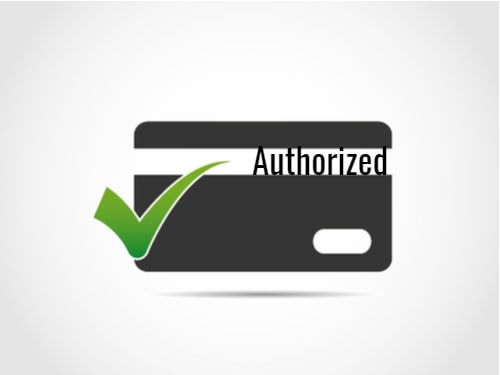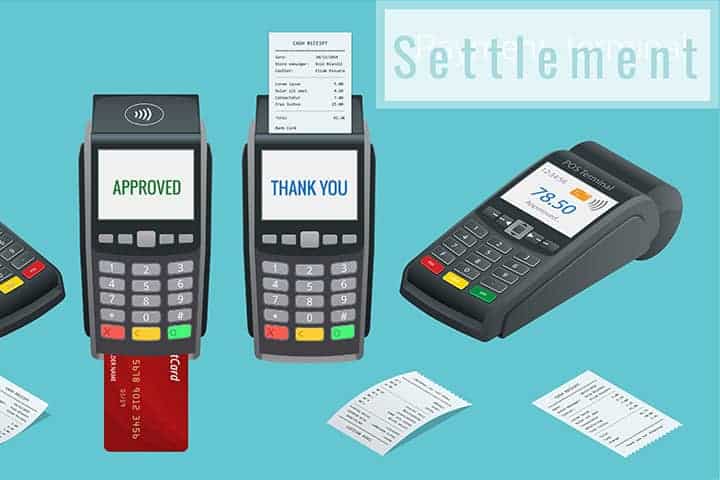Knowledge is power. And the more you know about running your business, the more you’re empowered to make the best choices to help your business grow. This includes understanding what credit card processing is and how it works.
Credit card processing is so commonplace, it’s easy to take for granted. We daily swipe, tap, or insert our cards in various credit card terminals or POS systems, rarely giving it a second thought.
But being an everyday occurrence is exactly why it matters. After all, your business might accept credit card payments tens, hundreds, or even thousands of times each month. So if you can improve each one of those transactions, you stand to raise your bottom line immensely.
There’s a variety of key players and processes that we’ll examine in this article. But first, let’s start with the basics of what is credit card processing.
What credit card processing actually is

To put it simply: credit card processing is the transferring of approved funds from one bank to another through a credit card system.
This is a very general definition, of course. However, that is the basic idea: transferring a certain amount of money from one bank to another in an authorized way. We need to understand this basic concept first. From there, we’ll look at the parties, systems, and requirements set in place to make sure it happens quickly, safely, and conveniently.
Let’s first take a closer look at the parties involved in credit card processing to get a clearer picture.
Who’s involved with credit card processing
It shouldn’t be a surprise to know there’s multiple parties involved to make sure money is transferred safely, quickly, and securely with every credit card transaction.
However, what may be unexpected is to learn of everyone doing their part behind the scenes to make sure it all takes place as intended.
Let’s identify everyone involved in credit card payments and what role they play:
- The cardholder: The person with a credit or debit card in hand, ready to make a purchase.
- The Merchant: With their goods or services for sale, the merchant uses a credit card terminal, software, POS system, or gateway to charge the credit or debit card of the cardholder.
- Issuing bank: The cardholder’s bank that contains the funds the cardholder uses to pay merchants for their goods and services.
- Merchant bank: The bank where merchants store their funds and where a cardholder’s payment gets sent.
- Card association: These support credit card processing by acting as an intermediary between the issuing and merchant banks via their networks, guidelines, and services. Think Visa or Mastercard and you’ll quickly identify these key players.
- Payment processor: The company that transmits information between the merchant, issuing bank, merchant bank, and card associations on their networks, among other things.
How does credit card processing work
All of this might be a bit abstract. After all, there’s many parties, institutions, and systems involved in processing credit card payments. So let’s use an example to give it clarity:
Alex wants to buy bread from a bakery. Alex uses a credit card to pay at the bakery’s credit card terminal. Within seconds, the first of two processes begins: credit card authorization.
Let’s take a closer look at what actually takes place.
Credit card authorization steps
As Alex slides his card in, a sudden sequence of events begins to happen at astonishing speed:
- As Alex inserts his card, the bakery’s credit card terminal sends a request for payment authorization to their payment processor.
- That payment processor signals through the card association that Alex’s bank (the issuing bank) is to move funds. It also includes important security details such as Alex’s expiration date and CVV number.
- Alex’s bank then approves the transaction because he has enough money in his account. Had there been insufficient funds, they would have denied the transaction.
- That approval of payment from Alex’s bank gets sent through the card association to the bakery’s bank.
Alex can go home from the bakery with bread in hand just seconds later, thanks to the credit card payment having been successfully authorized.
Yet, that’s not to say the bakery has Alex’s money in their bank account. To receive that, the transaction needs to be cleared and settled.
Credit card settlement
- Even though the payment was authorized, it hasn’t yet been processed. The bakery waits until later that day for their payment processor to process Alex’s authorized transaction. They do this process together with the transactions from their other customers. These groups of transactions are called batches.
- The payment processor sends these details to the card association, who then debit Alex’s bank for the amount owed from the bread.
- Alex’s bank sends funds (minus transaction fees) from Alex’s account to the bakery’s bank. They then deposit this money into the bakery’s bank account.
Benefit from understanding credit card processing
Now that you have an idea of what’s involved in a simple debit or card purchase, you’re likely applying this knowledge to your own business. As mentioned before, there are numerous parties involved—and not for free.
This system wouldn’t be in existence had it not been profitable to create it and manage it. That means fees are involved, which affect your bottom line. How can you make sure you’re not slowly leaking money from every credit card processing transaction?
One way is to make sure you understand what to look for in a credit card payment processor. Even though various entities regulate this field, payment processors are not created equal.
The truth is that some charge more money than others: some might charge higher fees or they might or charge you more often, or both.
Once again: knowledge is power. And Progressive Payments Solutions wants you to be in control of your business. That’s why we put together a comprehensive guide to help you learn the five most important steps to choosing a payment processor.
Grab a complimentary download here and start saving money today.
